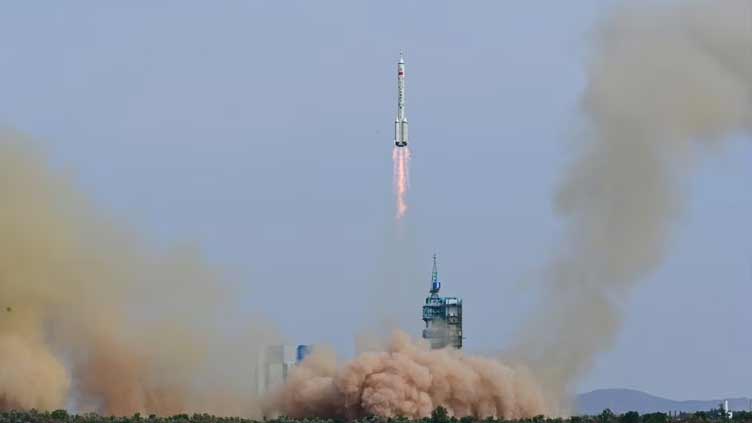China launches Shenzhou-16 mission to Chinese space station

Technology
The astronauts on Shenzhou-16 will replace the three-member crew of the Shenzhou-15
BEIJING (Reuters) - China sent three astronauts to its now fully operational space station as part of crew rotation on Tuesday in the fifth manned mission to the Chinese space outpost since 2021, state media reported.
The spacecraft, Shenzhou-16, or "Divine Vessel", and its three passengers lifted off atop a Long March-2F rocket from the Jiuquan Satellite Launch Centre in the Gobi Desert in northwest China at 9:31 a.m. (0131 GMT).
The astronauts on Shenzhou-16 will replace the three-member crew of the Shenzhou-15, who arrived at the space station late in November.
The station, comprising three modules, was completed at the end of last year after 11 crewed and uncrewed missions since April 2021, beginning with the launch of the first and biggest module - the station's main living quarters.
China has already announced plans to expand its permanently inhabited space outpost, with the next module slated to dock with the current T-shaped space station to create a cross-shaped structure.
Leading the Shenzhou-16 mission was Jing Haipeng, 56, a senior spacecraft pilot from China's first batch of astronaut trainees in the late 1990s. He had travelled to space three times before, including two trips as mission commander.
Jing flew with Zhu Yangzhu and Gui Haichao, both 36 and part of China's third batch of astronauts. The mission is Zhu's and Gui's first spaceflight.
Former military university professor Zhu will serve as spaceflight engineer while Gui, a professor at Beihang University, will serve as the payload specialist on the mission, managing science experiments at the space station.
Beijing is expected to launch one more crewed mission to the orbiting outpost this year.
Also by the end of 2023, China is due to a launch space telescope the size of a large bus.
Known as Xuntian, or "Surveying the Heavens" in Chinese, the orbital telescope will boast a field of view 350 times wider than that of the Hubble Space Telescope, which was launched 33 years ago.


